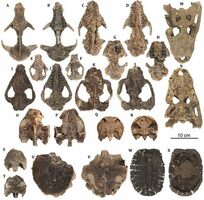How Are Pallasite Meteorites Formed?
A pallasite meteorite is a type of stony-iron meteorite, a rare and unique category of meteorites characterized by their intriguing blend of both rock (stony material) and metal. What sets pallasites apart from other meteorites is their composition, which features exquisite olivine crystals embedded within a metallic matrix, primarily consisting of iron and nickel. This creates a stunning appearance when sliced making them some of the most collectable of all meteorite specimens.
Pallasite meteorites are thought to form at the boundary regions between the metal cores and silicate mantles of certain early planetary bodies or asteroids. The exact process of their formation is not completely understood, but there are several hypotheses proposed by scientists:
Planetary Differentiation: One prevailing theory suggests that pallasites originate from the remnants of large, differentiated planetary bodies or asteroids. These bodies experienced a process called planetary differentiation, where intense heat and pressure caused heavy metallic elements like iron and nickel to sink toward the center, forming a dense metal core. Simultaneously, lighter silicate minerals, including olivine, remained in the outer layers. Pallasites may have formed at the interface between these layers.
Impact Events: Another hypothesis proposes that pallasites could form as a result of powerful impact events on differentiated parent bodies. These impacts could disrupt the boundary between the metal core and the silicate mantle, mixing the two components and creating pallasites.
Melt Veins: Some researchers suggest that pallasites may result from the intrusion of molten metal into fractures or voids within the silicate mantle of a planetary body. Over time, the metal can cool and solidify, trapping olivine crystals and forming the distinctive structure seen in pallasite meteorites.
It's important to note that the exact mechanism of pallasite formation may vary among individual pallasite meteorites. Each pallasite's unique composition and characteristics can provide clues about the specific conditions and processes that occurred on its parent body, contributing to our understanding of planetary formation and differentiation in the early solar system.
Pallasite meteorites are thought to form at the boundary regions between the metal cores and silicate mantles of certain early planetary bodies or asteroids. The exact process of their formation is not completely understood, but there are several hypotheses proposed by scientists:
Planetary Differentiation: One prevailing theory suggests that pallasites originate from the remnants of large, differentiated planetary bodies or asteroids. These bodies experienced a process called planetary differentiation, where intense heat and pressure caused heavy metallic elements like iron and nickel to sink toward the center, forming a dense metal core. Simultaneously, lighter silicate minerals, including olivine, remained in the outer layers. Pallasites may have formed at the interface between these layers.
Impact Events: Another hypothesis proposes that pallasites could form as a result of powerful impact events on differentiated parent bodies. These impacts could disrupt the boundary between the metal core and the silicate mantle, mixing the two components and creating pallasites.
Melt Veins: Some researchers suggest that pallasites may result from the intrusion of molten metal into fractures or voids within the silicate mantle of a planetary body. Over time, the metal can cool and solidify, trapping olivine crystals and forming the distinctive structure seen in pallasite meteorites.
It's important to note that the exact mechanism of pallasite formation may vary among individual pallasite meteorites. Each pallasite's unique composition and characteristics can provide clues about the specific conditions and processes that occurred on its parent body, contributing to our understanding of planetary formation and differentiation in the early solar system.
 Reviews
Reviews






